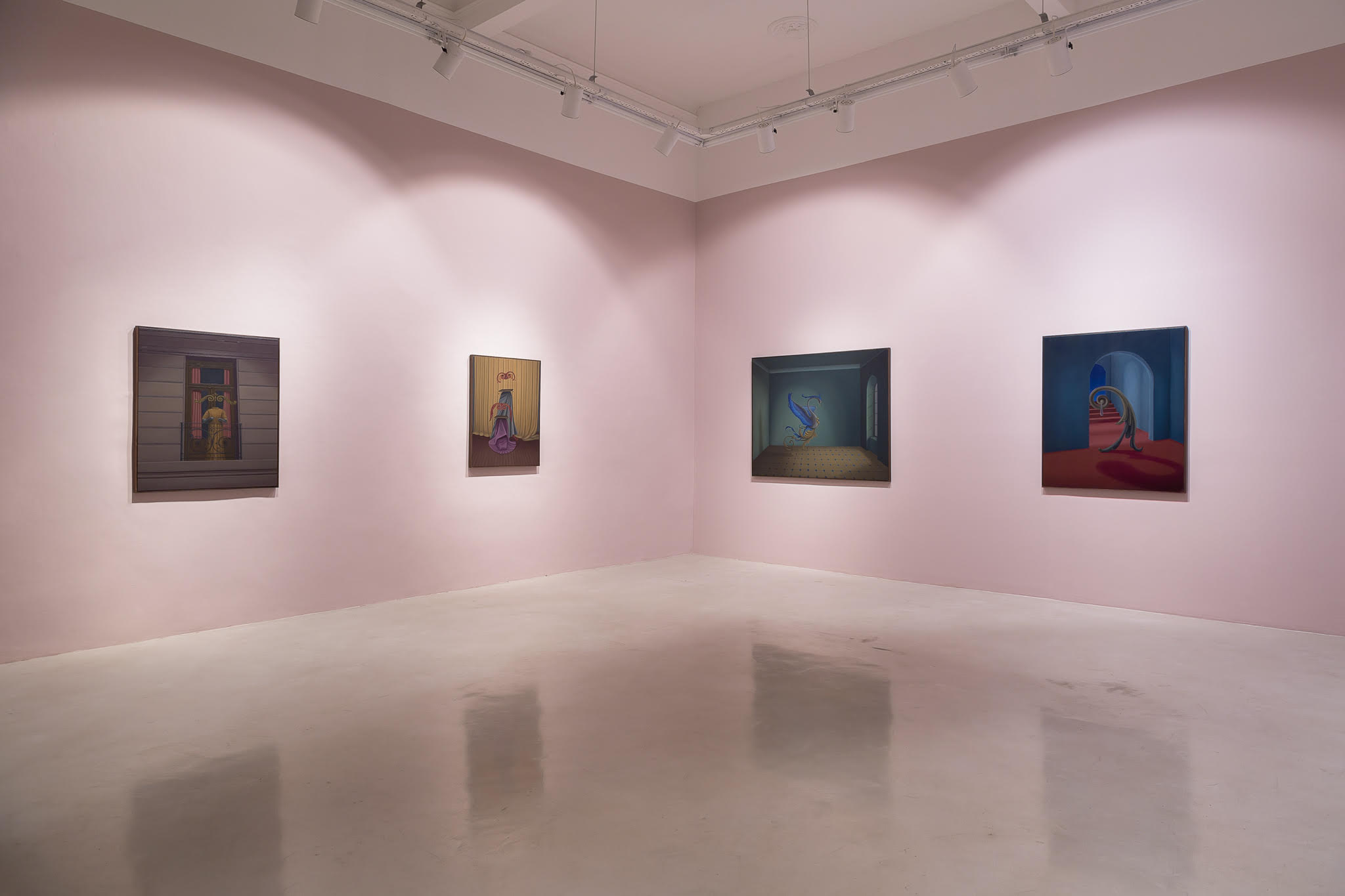Jimena Losada Lacerna (1990) was born and educated in the city of Mendoza, later moved to Rosario and currently lives in Buenos Aires. The transit through these three cities and their geographies accompanies different aspects of its production.
From the mountain range, its varied earth tones, and the light filtered by the dust that flies in dry climates, Losada Lacerna takes the tertiary or quaternary colors and the low values that characterize her palette. In her paintings, she subtly alters the naturalism of color to give rise to atmospheres. missed. The skins take on a sallow appearance under lunar lighting, and the shadows appear to come from theatrical lighting. The shine and golden reflections highlight some volumes and make one think of goldsmith pieces. The paintings summon, then, sensations of a preciously worked metal. It is in these details where the artist’s solid technique in handling oil is perceived most forcefully. Her impeccably crafted canvases are polished-looking surfaces on which the gesture of the brush has become imperceptible under successive layers of pigments and glazes. Whoever looks at them will believe they are facing oracular mirrors where destinies are interpreted.
From the city of Rosario, Losada Lacerna rescues the gregarious customs of her artists, the telluric forces that inhabit her paintings and, again, the exploration of color in the landscape. She also has access to collections – public and domestic – in the city, where she finds references among the painters from the local school. Her pictorial practice is nourished by these views to be thought in association with those non-programmatic aspects of surrealism that, although diffuse, run through the history of Argentine art. In this sense, her work could be linked to the early production of Leónidas Gambartes or Dignora Pastorello, and even to more heterodox figures, such as Vito Campanella. In the case of Losada Lacerna, the artist shows enormous freedom to take elements of the descriptive order and make them enter the narrative plane, or vice versa, even in the genres of portrait and self-portrait.
Also in Rosario, Losada Lacerna developed a “site-specific painting” in which she introduced into the work a detailed description of the place where she made it. That series displays enigmatic scenes in interior spaces and condenses climates of intimacy and seclusion, and even oppression. Human or anthropomorphic, the figures that inhabit those centuries-old halls and rooms seem to have been captured in the spectral hours in which night transforms, little by little, into day. Their faces and postures, intentionally fixed, make us think of statuary or masks from Greek antiquity: they function as allegories of emotional states or as coded ways of representing links with people and things, but also with ideas.
In Buenos Aires, the artist works and develops her most recent works in which she seeks to “open the plot” of her painting to go towards a stripped-down composition. This is where her craft demonstrates special strength in the exploration of new construction procedures. At a thematic level, these pieces propose greater sobriety and almost completely remove the dramatic aspects that characterize the previous ones. Taking into account the shapes of typical Buenos Aires buildings, Losada Lacerna recovers the neoclassical lines of the facades, the colorful limestone floors and the ornamentation with motifs of flowers, acanthus leaves and volutes. This series also shows her sculptural knowledge applied to the distribution of weights and volumes on the plane. While moldings and hardware acquire volume, body and movement, to become the protagonist figures of some paintings (not without contributing a share of hilarity and sympathy), the surrounding space is built from devices typical of classical painting. Among them, overlapping portals, stairs that lead nowhere, windows that open towards an outside frame, tiles that disappear, semicircular arches and curtains that hide mysterious presences. In one of the pieces, academic-looking architecture is planted in a desert landscape, as if marking the place where something new has begun.
In addition to developing her work in Mendoza, Rosario and Buenos Aires, Losada Lacerna has held individual exhibitions in institutions and galleries in these three cities. In Back to the Moon (2019), in the annex of the Municipal Museum of Modern Art of Mendoza, she presented a set of paintings-artifacts. Later, Rincón Vago (2021), took place at the Jamaica gallery in Rosario. In July 2023, Fangal, curated by Claudia del Río, will be the artist’s first presentation at the Pasto gallery in Buenos Aires.


 Losada Jimena
Losada Jimena